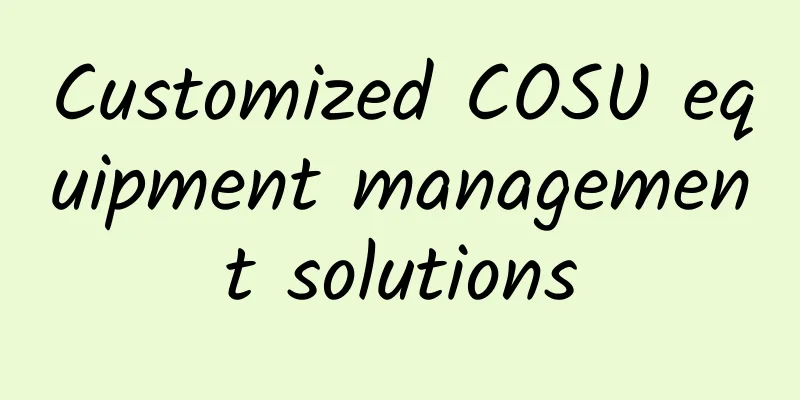Customized COSU equipment management solutions

|
Corporate Owned Single-Use Units (COSUs) are used across many industries. They typically consist of an Android TV-powered device that is locked to a single purpose. You can find them in airport lounges, hospital lobbies, and at trade shows and conferences, often used as information kiosks, touchscreen check-ins, and video displays. There are two types of COSU devices: customer-facing and employee-facing. The former provide digital services or information services to customers, such as kiosks, e-ticketing kiosks, or video displays. When companies use COSU for large-scale activities, they usually need dozens or even hundreds of devices. Managing all these devices securely and ensuring they work as intended involves a lot of time, effort, and money if done manually. A smarter and more efficient approach is to deploy a mobile device management (MDM) solution through cloud connectivity.
Why use a mobile device management solution?MDM software provides enterprises with a more efficient way to manage hundreds or even thousands of devices. If the IT team has to manually handle each device in their COSU, there will be no time to do anything else. In addition to time considerations, every time the software needs to be updated and patched or a new application needs to be installed, the company will also send a team to the local site for operation, which consumes manpower costs. With MDM software, technicians can connect to all devices wirelessly at the same time. From their desks, they can perform regular monitoring and maintenance tasks. At the same time, administrators can perform security checks and deploy measures to protect devices and their data from unauthorized use. In addition, MDM provides the following advantages.
Get started with COSU Device ManagementCompanies that require employees to use only authorized devices at work usually provide COSU devices that are managed by the IT team. However, some companies allow employees to connect their personal devices to the corporate network. This is often a win-win situation for companies and employees. For employees, it means managing one device instead of multiple devices. For management, it means fewer devices to buy and more cost savings. However, with one device, how can employees separate work and personal activities? COSU device management including BYODThe practice of using personal devices, known as BYOD, has long been an issue for many organizations. Policies that allow employees to use their personal devices provide a more convenient way for employees to connect to the office network. This practice does present risks, and managing a COSU network that utilizes BYOD devices will require a qualified MDM solution to ensure that work data remains secure in the office. In addition, the software should allow for flexible deployment, seamless integration, and device-agnostic capabilities. This ensures that employees can enjoy the benefits of BYOD while their devices remain secure. When managing COSU and BYOD devices for employees, enterprises must:
Manage COSU equipment efficiently with smart solutionsConfiguring access levels and ensuring device security will become an easier task if you use a strong MDM solution. In particular, using a single-purpose device management solution can help prevent devices from straying from their purpose. MDM software also provides an effective window for monitoring and maintenance, and ensures that devices are protected from unauthorized connections. The ideal MDM software should be a device-agnostic platform that can accommodate both COSU and BYOD devices. It should have cloud connectivity to connect to all devices wirelessly. Additionally, COSU device management software must adhere to data privacy guidelines such as GDPR, HIPAA, FERPA, and others. Private data must be handled securely, and awareness of applicable policies can help avoid costly breaches. The software should also have the ability to generate usage data in each device to create reports and analytics. Once connected to the network, devices can now be monitored to determine their location and whether their use is in compliance with policy guidelines. In the event that administrators suspect an attempt to destroy data or actually steal a device, administrators can activate security measures. In extreme cases, this may include locking the device or wiping the data to prevent data theft. |
>>: Wi-Fi HaLow could be the next IoT enabler
Recommend
Quick Start with Linkerd v2 Service Mesh
In this guide, we'll walk you through how to ...
DiyVM: Japan Osaka/US Los Angeles/Hong Kong Shatin CN2 line 2G memory VPS monthly payment starts from 50 yuan
DiyVM has recently made major changes to the webs...
Enterprise cloud transformation is imminent, network architecture needs to be prepared
[51CTO.com original article] The rapid developmen...
In the win-win multi-cloud era, Juniper Networks helps enterprises achieve digital transformation
In July this year, Gartner released the 2019 Data...
How much room do operators have for increasing speed and reducing fees?
The "Economic Operation of the Communication...
Do you know which city has the fastest Wi-Fi speed in the world?
Since the coronavirus crisis, fast internet has b...
The WiFi at home is getting slower and slower. Do these ten things to make the Internet speed fly again
The broadband access at home now often starts at ...
MWC19 Shanghai | Data center 400G solution, AI empowers the future
In recent years, with the rapid growth of mobile ...
Huawei Enjoy 10S released with a 48-megapixel ultra-wide-angle AI triple camera priced at RMB 1,000. Are you tempted?
This afternoon, Huawei released a thousand-yuan m...
OTT IPTV has broad business opportunities. How can operators further explore CDN opportunity windows?
At the Asia-Pacific CDN Summit in April, George, ...
Markets and Markets: 5G enterprise market size will reach US$10.9 billion in 2027
According to the latest market research report re...
What is the 5G Open RAN Policy Alliance established by Microsoft, Google, Samsung and other giants?
According to foreign media reports, the Open RAN ...
IDC Commentary: What are the remaining obstacles to China's 5G?
With the news that Nokia and Ericsson won the bid...
Nexril: $9/quarter KVM-1GB/15G SSD/1TB/Dallas data center
Nexril is a site under Corex Solutions, LLC. It w...
5G paves the way for new IoT projects
Since its major launch two years ago, 5G has cont...









